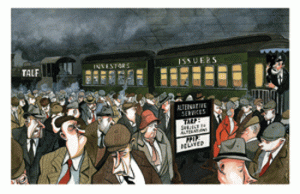
An article in today's Forbes online entitled Trouble with TARP, reports a growing concern by the Congressional Oversight Panel (COP) about the effectiveness of the $700 billion program. The COP reports that the effectiveness of the program is difficult to determine due to lack of transparency of how funds were spent. The COP report also states that the absence of any reporting guidelines for TARP participants impedes effective oversight.
As this blog reported earlier this week, the TARP was originally designed to acquire troubled assets from banking institutions. TARP funds were earmarked to purchase mortgage backed securities and other derivatives whose distressed valuations severely eroded capital ratios and stressed banks balance sheets. Hank Paulson later shifted the strategy and decided to inject TARP funds into the banks equity base. This has done wonders for the shareholders of the banks but troubled assets remain on the banks balance sheet. As the recession continues, unemployment, home foreclosures, SME bankruptcies and the looming problem with commercial mortgage backed securities (CMBS) are placing a new round of added strain on the banking system.
The COP also questioned the effectiveness of TARP because stress tests were only conducted on 19 banks. The report states that additional stress tests may be required because the previous tests failed to account for the length and depth and length of the recession. Community banks are also of concern. They face a perfect storm in challenging macroeconomic conditions. Of particular concern is commercial real estate loans. Many economists are concerned that high rate of loan defaults in commercial loan portfolios pose great threats to the community banking sector.
Risk: banks, SME, economy, credit, market
You Tube Video Music: Billie Holiday with Lester Young, Pennies from Heaven

